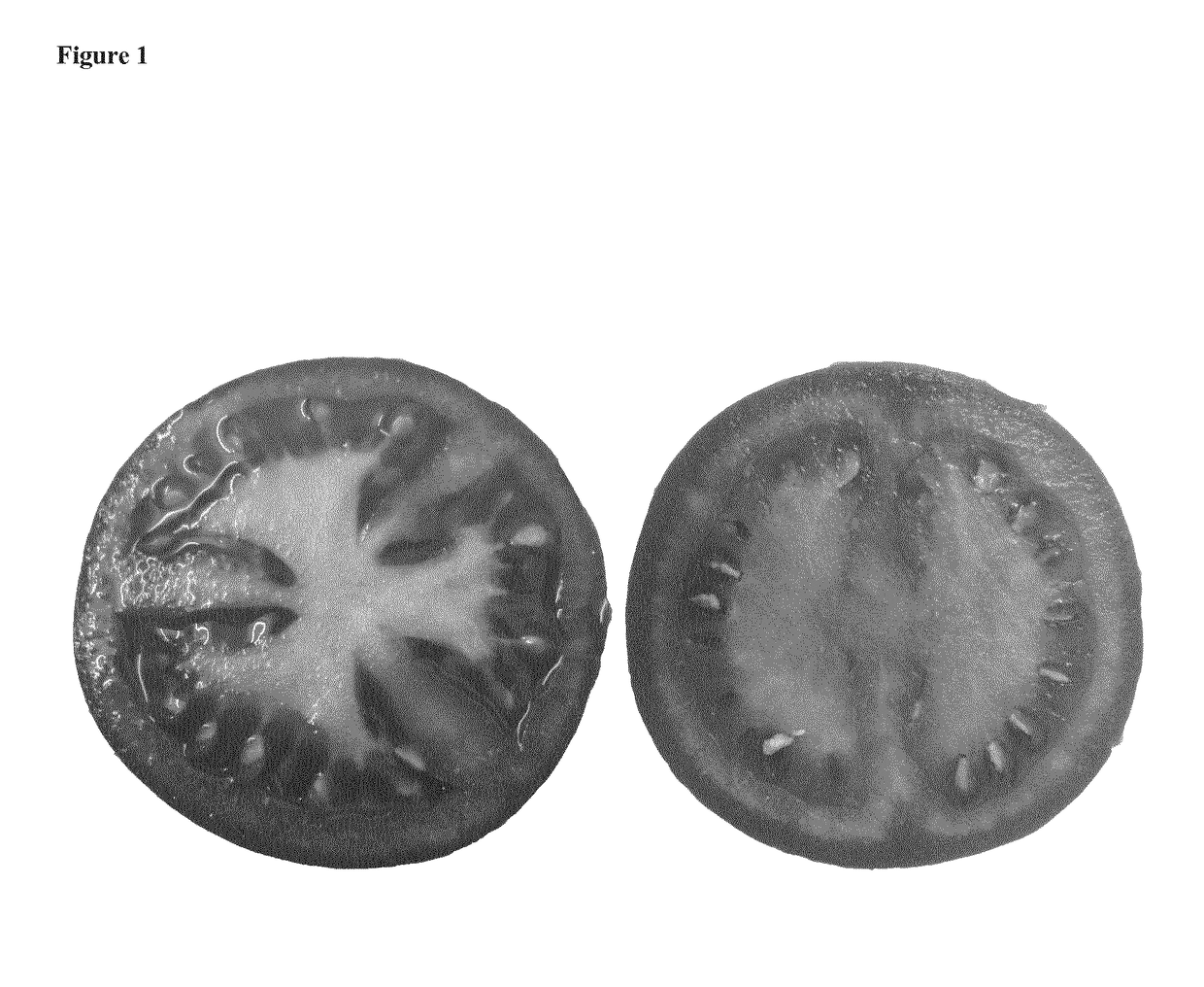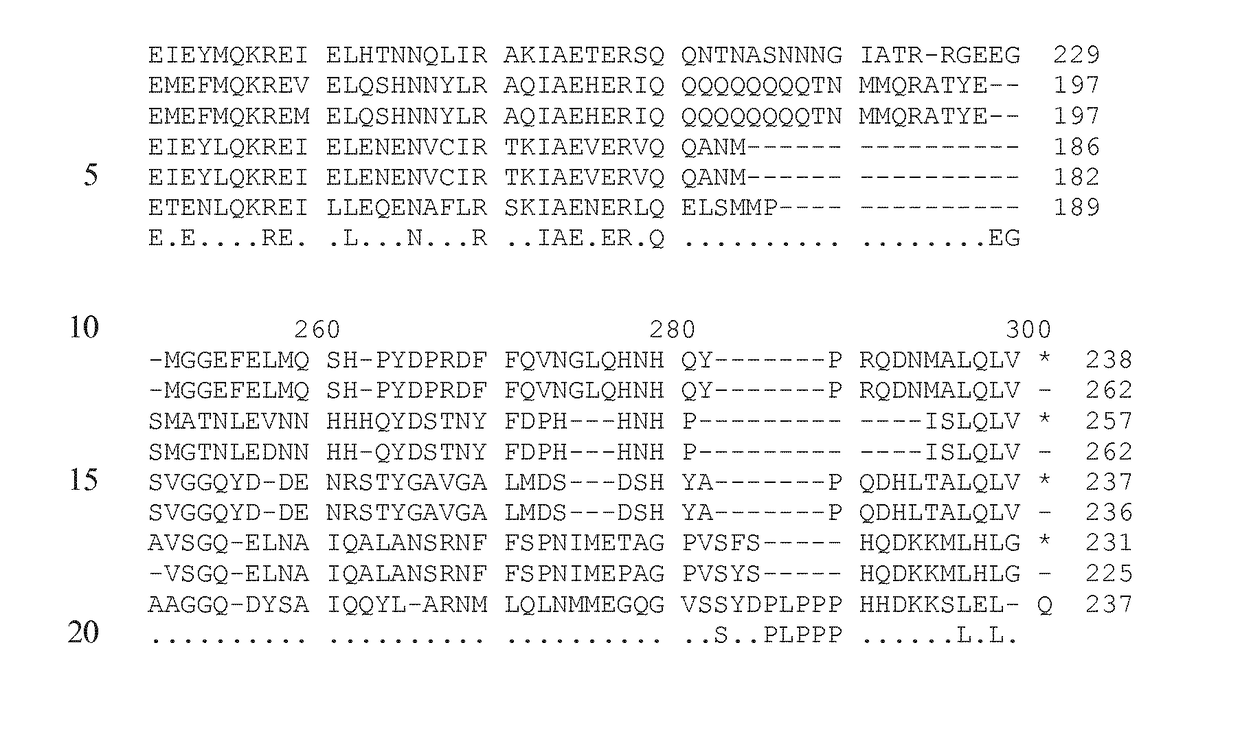Plants with an intense fruit phenotype
a plant phenotype and intense fruit technology, applied in the field of plants with intense fruit phenotype, tomato or cucurbitaceae breeding, can solve the problems of difficult mapping of the responsible gene, no marker for the intense phenotype is known, breeders can only select plants with intense phenotypes, etc., to maximize the number of matches and minimise the number of gaps
- Summary
- Abstract
- Description
- Claims
- Application Information
AI Technical Summary
Benefits of technology
Problems solved by technology
Method used
Image
Examples
examples
Analysis of ogc Fruit Phenotype
[0270]The “ogc phenotype” or “ogc fruit phenotype” is the phenotype conferred by the presence of two recessive Solanum lycopersicum ogc alleles in the genome. Its presence was determined visually by analysing ripe tomato fruits by cutting the ripe tomato fruit into two halves and determining the tomato flesh colour; comparing the colour to a normal fruit type like e.g. Heinz or Moneymaker. Ogc phenotype has deep red flesh colour (red towards purple red) while a normal tomato has a less red flesh colour (red towards yellow-red). Pericarp of a normal tomato sometimes even has a white or green-white colour.
[0271]Fruit flesh was exposed for measurement by cutting the proximal end of the tomato transversely with a sharp knife, such that only the pericarp and the top of locular partitions were visible. The gelatinous placental tissue was not measured. Two measures were made on opposite sides of the exposed fleshy surface.
Analysis of Intense Fruit Phenotype
[0...
PUM
| Property | Measurement | Unit |
|---|---|---|
| weight | aaaaa | aaaaa |
| fresh weight | aaaaa | aaaaa |
| fresh weight | aaaaa | aaaaa |
Abstract
Description
Claims
Application Information
 Login to View More
Login to View More - R&D
- Intellectual Property
- Life Sciences
- Materials
- Tech Scout
- Unparalleled Data Quality
- Higher Quality Content
- 60% Fewer Hallucinations
Browse by: Latest US Patents, China's latest patents, Technical Efficacy Thesaurus, Application Domain, Technology Topic, Popular Technical Reports.
© 2025 PatSnap. All rights reserved.Legal|Privacy policy|Modern Slavery Act Transparency Statement|Sitemap|About US| Contact US: help@patsnap.com



